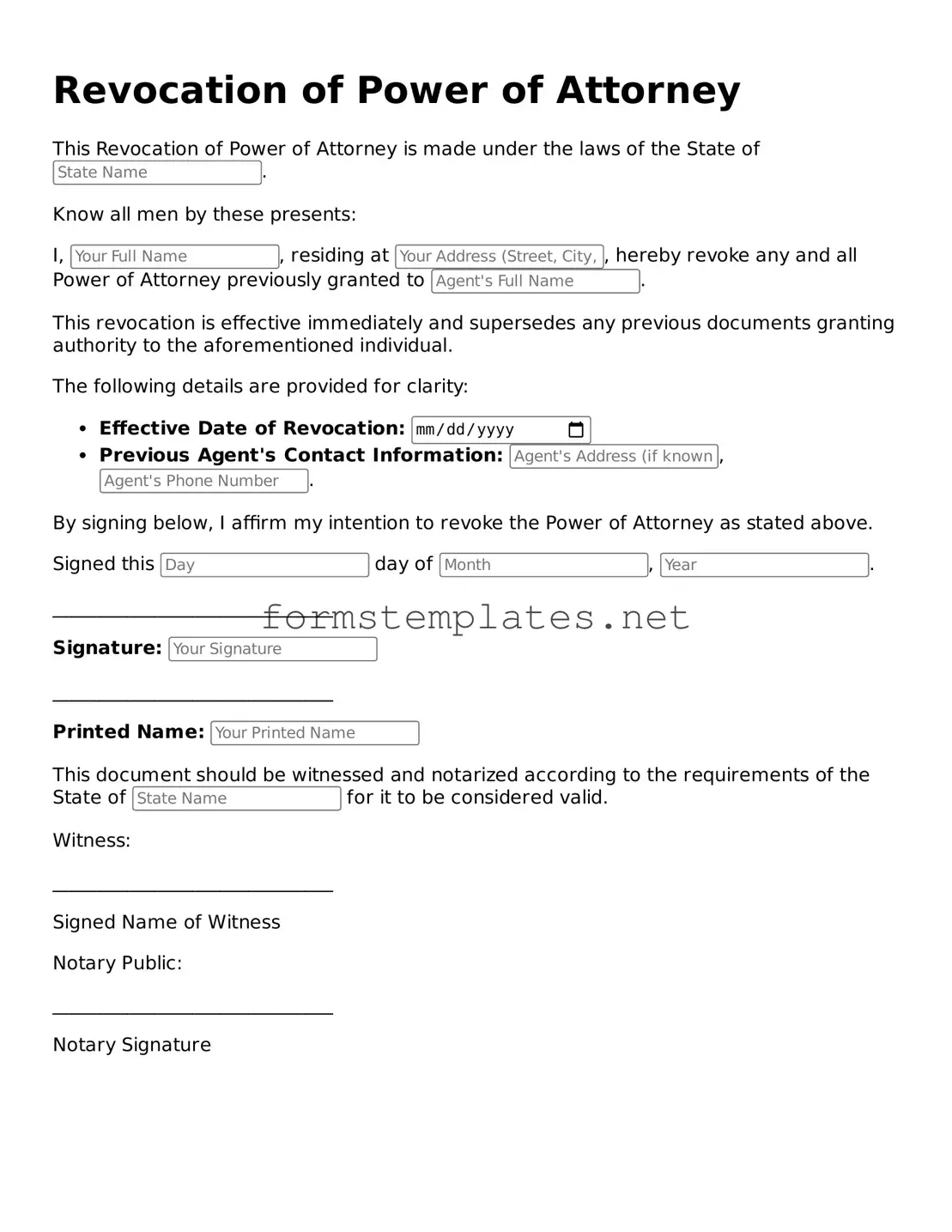Attorney-Verified Revocation of Power of Attorney Form
The Revocation of Power of Attorney form is a legal document used to cancel or revoke a previously granted power of attorney. This form is essential when an individual no longer wishes to allow another person to make decisions on their behalf. Understanding how to properly complete this form can help ensure that your wishes are respected and legally upheld.
Open Editor Now
